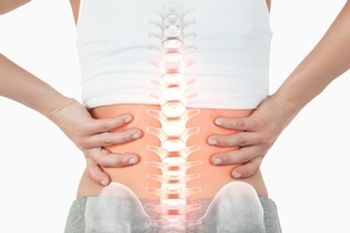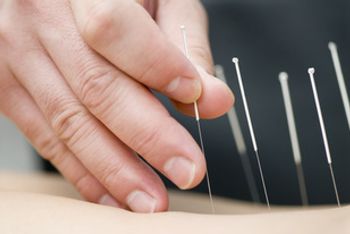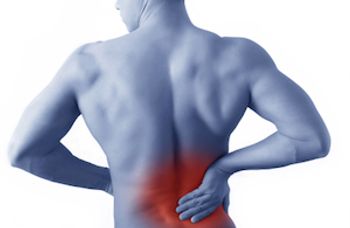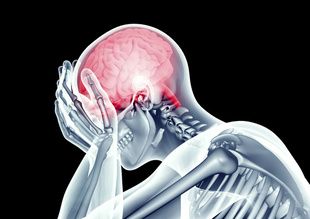
Pain Management
Latest News

Latest Videos
CME Content
More News

There are a number of nonopioid options, as well as nondrug options, for pain management, explained Jeff White, PharmD, MS, staff vice president, Anthem.

Chronic pain affects many patients worldwide and often leads to opioid prescribing, thereby increasing the risk of opioid misuse. A position statement by the Association of Academic Physicians, published by the American Journal of Physical Medicine & Rehabilitation, reflects experts’ call for a new, comprehensive national strategy to include a functional approach to the diagnosis and treatment of pain.

As the opioid epidemic continues to claim tens of thousands of lives each years, stakeholders from around the country are launching efforts to enforce appropriate prescribing patterns and identify those most at risk for opioid misuse and abuse.

Back pain is a leading cause of disability, and the proportion of adults over age 65 who have back pain is increasing in the United States, particularly among women. Now, research has demonstrated that persistent back pain is also linked with an increased risk of death in older women.

During a joint meeting of the FDA’s Anesthetic and Analgesic Drug Products Advisory Committee and Drug Safety and Risk Management Advisory Committee, members voted in favor of approval for Mallinckrodt’s MNK-812, an abuse-deterrent formulation of oxycodone.

There are more similarities between patients with opioid dependency and patients with opioid misuse and abuse than physicians have been led to believe, said Elizabeth Stringer, PhD, chief science and clinical officer of axialHealthcare.

The quantity of opioid prescribed after surgery is associated with higher patient-reported opioid consumption, according to a recent study.

A pharmacist-led intervention that targeted patients undergoing joint replacement surgery led to a significant reduction in post-surgical opioid use among hip replacement patients, according to a Kaiser Permanente study published today in The American Journal of Managed Care®.

This pharmacist-led, patient-directed intervention demonstrated a reduction in opioid dispensings in the 90 days following hip replacement but not knee replacement.

The Global Burden of Disease Study has ranked low back pain as a leading cause of disability worldwide, and the Lancet Low Back Pain Series Working Group has recommended that researchers and policy makers develop and implement strategies to identify and educate patients with low back pain who are at risk of persistence of pain and disability.

A cancer pain control program for inpatients based on electronic health record–based automatic screening provided effective pain relief and achieved high satisfaction among patients and physicians.

Individuals who suffer from knee pain also may suffer from neuropathic-like knee pain (NKP)—a result of localized damage to the nervous system and nerve fibers around a joint. Recent research aimed to determine the prevalence and risk factors of NKP, finding that NKP is driven by central risk factors and may require unique prevention and treatment strategies.

The FDA has approved a new sublingual formulation of sufentanil, Dsuvia, for the management of acute pain in adults in medically supervised healthcare settings, such as hospitals, surgical centers, and emergency departments. The drug is supplied in a 30 microgram tablet in a single-dose, prefilled applicator for administration by a healthcare professional, and it will not be available in retail pharmacies or for outpatient use.

Recent research evaluating the impact of implementing a new standardized pain care bundle to reduce postoperative opioids after outpatient general surgical procedures found that the bundle decreased opioid prescribing and often eliminated opioid use.

A new study suggests that patients undergoing thyroid and parathyroid surgery need little opioid treatment postoperatively if they receive preoperative patient education.

Acupuncture represents a nonopioid alternative for treatment pain, but many institutions, including the Department of Veterans Affairs, are resistant to using the treatment.

A German study examined whether multidisciplinary inpatient treatment for chronic neuropathic pain leads to improvement of pain in outcome and psychological variables at posttreatment and 3-month follow-up.

For chronic sciatica, a recent study said that while gabapentin (GBP) and pregabalin (PGB) are both effective, GBP was found to be superior with fewer and less severe adverse events.

Results of a study about an implantable device for chronic pain relief showed it reduced disability by about 27%, according to patient-reported outcomes about this nondrug pain treatment.

A new study identified 3 novel genetic variants associated with chronic back pain, which is a leading cause of disability worldwide.

Insurers have inconsistent policy terms for nondrug treatments for low back pain while providing limited or no coverage for treatments that have scientific support, such as acupuncture and psychological counseling, according to researchers at Johns Hopkins Bloomberg School of Public Health.

Opioid abuse-deterrent formulations (ADFs) represent 1 aspect of an opioid risk management plan that is aimed at managing a patient’s pain relief and quality of life while also protecting against harmful outcomes of opioid misuse. A report, published by the Journal of Multidisciplinary Healthcare, outlined ADF types and strategies and concluded all stakeholders play a role and must cooperate with opioid risk management in order to be effective.

Coverage of our peer-reviewed research and news reporting in the healthcare and mainstream press.

Researchers developed a set of items based on a previous literature review and patients’ focus groups and tested it on a wide set of patients with episodic and chronic migraine.

On the heels of various reports that have highlighted the challenges of treating back pain, Palmer College of Chiropractic and Gallup released their fourth annual survey of attitudes about and experiences with chiropractic care. The 2018 Gallup-Palmer College of Chiropractic Annual Report: Managing Neck and Back Pain in America is the latest effort by the college to see if public perceptions of chiropractic care match the ones held internally.








































